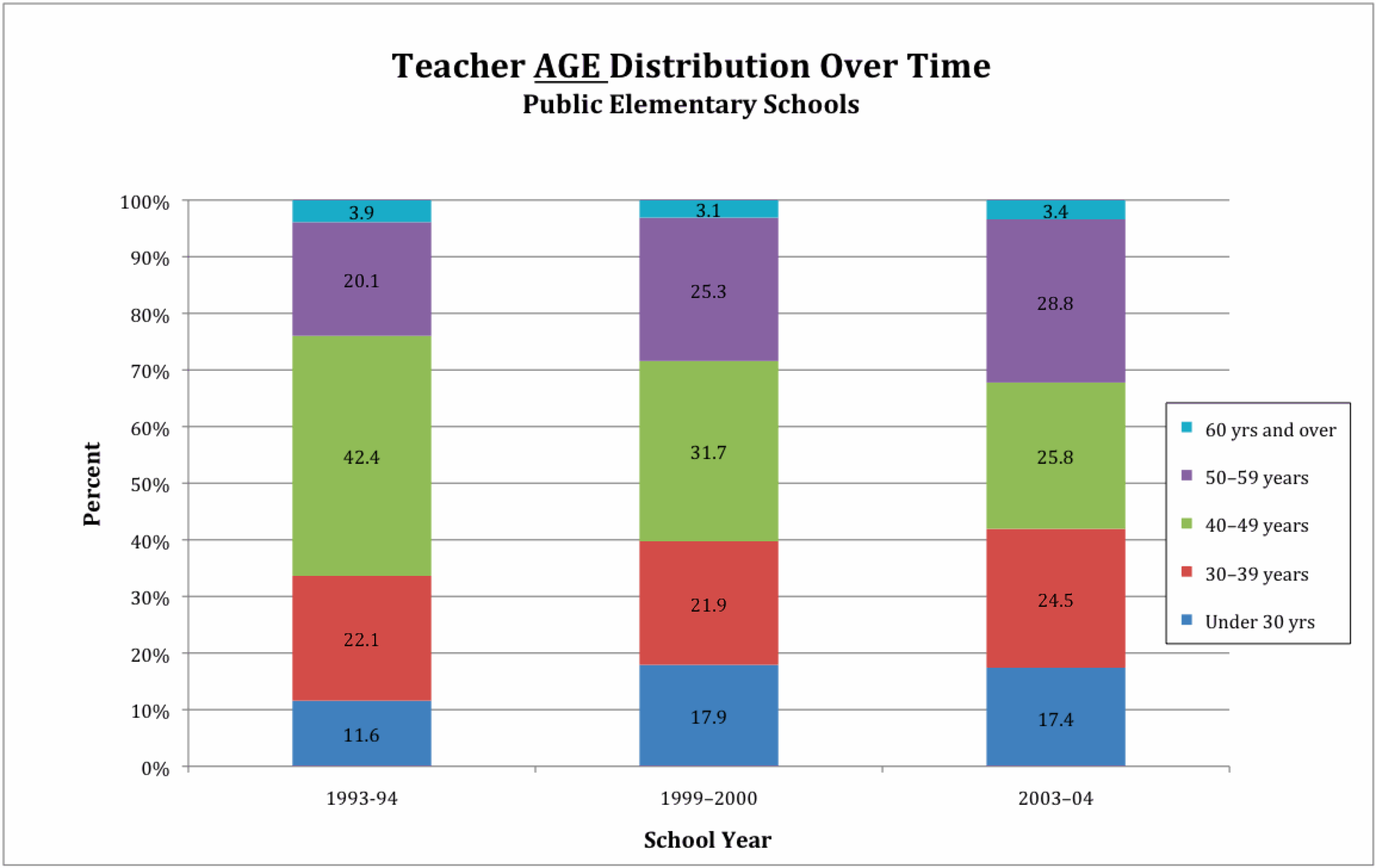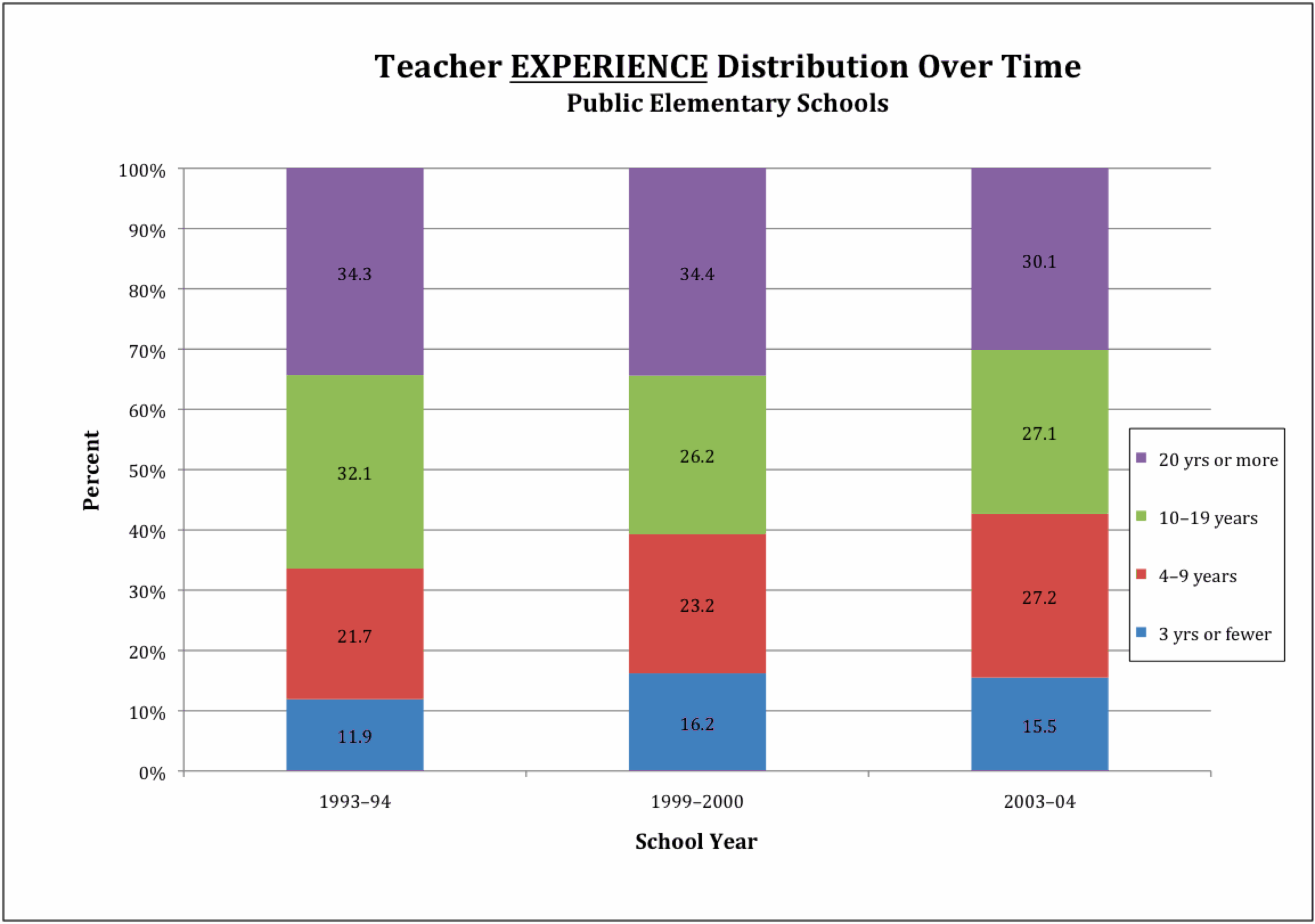Are Schools Adequately Attracting and Retaining Teaching Staff?
Why is this question important? A healthy school system requires both retention of experienced staff and attraction of new staff. Monitoring the age and years of experience of teachers helps evaluate the health of school district staff support and recruiting programs.
See further discussion below.


Sources: The Condition of Education (2007), Public Elementary School Teacher Age Distribution Table 33-1(a-c); Public Elementary School Teacher Experience Distribution Table 33-2(a-c), National Center for Education Statistics (NCES), Institute for Education Sciences (IES), U.S. Department of Education.
Results: Based on this recent data, fears about lack of people entering the education profession appear unfounded. During school year 1993-94, 11.6 percent of public elementary school teachers were below the age of 30 years. This percent increased to 17.4 for the 2003-04 school year. Likewise, during the 1993-94 school year, 11.9 percent of public elementary school teachers had 3 years of experience or less, while during the 2003-04 school year 15.5 percent had this amount of experience.
A similar pattern shows for teachers in their thirties, increasing from 22.1 percent of the total in 1993-94 to 24.5 percent in 2003-04. Also, the breakdown of teachers with 4 to 9 years of experience increases from 21.7 percent to 27.2 percent during the same period.
A significant trend visible in this data is a drop in teachers in their forties, from 42.4 percent of the total during the 1993-94 school year to 25.8 percent ten years later. Interestingly, during the same period teachers in their fifties increased from 20.1 percent to 28.8 percent. Thus, it appears that a good number of the teachers in their forties in 1993-94 may have stayed in the field to be teachers in their fifties in the 2003-04 measure.
On the other hand, the trend with highly experienced teachers (10-19 years and 20 years or more) is distinctly out of the teaching profession. Between 1993-94 and 2003-04, the percent of total public elementary school teachers with 10 to 19 years of experience dropped from 32.1 to 27.1 and for teachers with over 20 years of experience the percent dropped from 34.3 to 30.1.
Implications: These results seem to imply that over the ten years from 1993-94 to 2003-04, the teaching profession continued to attract new people, both below 40 years of age and over 50, to the field. The drop in highly experienced (10 to 20 years or more) teachers coincident with the growth of teachers in their fifties could be an indication of career shifting of mature workers to the teaching profession. With their real-world experience in prior professions, career-shifting could be a healthy trend that brings broader perspective into the classroom. The trend of teachers leaving the field after ten or more years is consistent with more frequent career changing all across the job market.
Authors:
National Center for Educational Statistics, Institute for Education Sciences, U.S. Department of Education
Publishers:
National Center for Educational Statistics, Institute for Education Sciences, U.S. Department of Education
Study Description:
The analysis collects school teacher experience and age data obtained from the National Center for Education Statistics (NCES) The Condition of Education. Age distribution data and years of experience distribution data of public elementary school teachers were reviewed for the 1993-94, 1999-2000, and 2003-04 school years.
